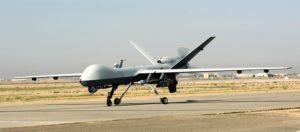
The Air Force has budgeted nearly $648 million in research-and-development funds over the next five fiscal years to develop the Advanced Battle Management System (ABMS), the proposed replacement for the service’s aging Joint Surveillance Target Attack Radar System (JSTARS) fleet. The service’s fiscal year 2020 budget justification books, released March 18, include nearly $36 million in research, development, test and evaluation (RDT&E) funds for the effort in FY ’20, followed by over $51 million for FY ‘21, nearly $165 million…

 By
By 











